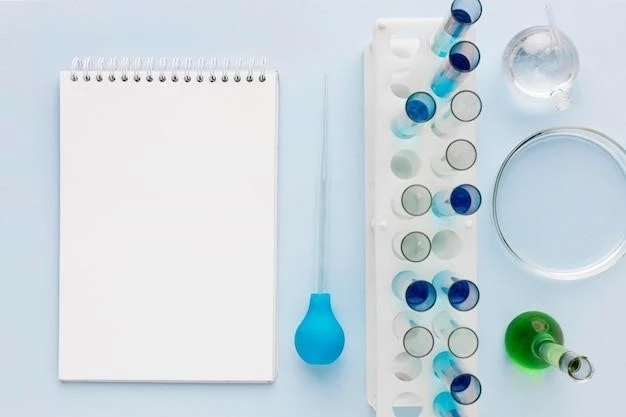Welcome to the comprehensive Noroxin Medication Guide. Here, you will find detailed information on the uses and benefits of Noroxin, potential side effects, recommended dosage guidelines, interactions with other medications to be cautious of, as well as important precautions and warnings. Additionally, we will provide you with valuable insights and safety tips to better understand and use Noroxin effectively.
Noroxin Uses and Benefits
Noroxin, a fluoroquinolone antibiotic, is primarily prescribed to treat bacterial infections such as urinary tract infections, prostate infections, and gonorrhea. It works by stopping the growth of bacteria. The benefits of Noroxin include effectively treating various bacterial infections and providing relief from associated symptoms. It is important to follow your healthcare provider’s instructions carefully to maximize the benefits of Noroxin in treating your condition.
Noroxin is known for its efficacy in combating bacterial infections. By targeting specific bacteria, Noroxin helps to eliminate the infection from the body, reducing the symptoms and promoting recovery. Its broad spectrum of action makes it a versatile choice for various types of bacterial infections. Always complete the full course of Noroxin as prescribed by your healthcare provider, even if you start feeling better before finishing the medication.
In summary, Noroxin’s uses and benefits include treating bacterial infections effectively and providing relief from associated symptoms. Its mechanism of action helps in combating specific bacteria, making it a trusted choice for healthcare providers in managing bacterial infections. It is essential to take Noroxin exactly as directed by your healthcare professional to ensure optimal results and minimize the risk of antibiotic resistance.
Side Effects of Noroxin
As with any medication, Noroxin may cause side effects in some individuals. Common side effects of Noroxin include nausea, vomiting, diarrhea, dizziness, headache, and stomach pain. It is important to contact your healthcare provider if these side effects persist or worsen.
Serious side effects of Noroxin that require immediate medical attention include tendonitis or tendon rupture, signs of a new infection (such as fever or persistent sore throat), unusual bruising or bleeding, and severe allergic reactions (e.g., rash, itching, swelling of the face/tongue/throat, severe dizziness, trouble breathing).
It is crucial to be aware of the potential side effects of Noroxin and to promptly report any unusual symptoms to your healthcare provider. Your doctor will be able to assess the severity of the side effects and recommend appropriate actions to manage them effectively, which may include adjusting the dosage or discontinuing the medication if necessary.
While side effects are possible with Noroxin, many individuals tolerate the medication well and benefit from its therapeutic effects in treating bacterial infections. By being vigilant about monitoring for side effects and seeking medical advice when needed, you can ensure the safe and effective use of Noroxin in your treatment regimen.
Noroxin Dosage Guidelines
The dosage of Noroxin (Norfloxacin) is prescribed by your healthcare provider based on the specific type of infection being treated, the severity of the infection, and your medical history. It is crucial to follow the dosage guidelines provided to you by your healthcare professional to ensure the effectiveness of the medication and minimize the risk of adverse effects.
For most bacterial infections, the typical adult dosage of Noroxin is 400 mg taken every 12 hours for 7 to 10 days. The dosage may vary for different types of infections or for individuals with specific health conditions. It is important not to exceed the recommended dosage of Noroxin unless instructed by your healthcare provider.
It is essential to take Noroxin at evenly spaced intervals to maintain a consistent level of the medication in your body. This helps to maximize the therapeutic benefits of Noroxin and reduce the risk of bacterial resistance. If you miss a dose of Noroxin, take it as soon as you remember, unless it is almost time for your next dose. In that case, skip the missed dose and continue with your regular dosing schedule.
Always complete the full course of Noroxin as prescribed, even if you start feeling better before finishing the medication. Stopping the medication prematurely can lead to incomplete treatment of the infection and potential recurrence. If you have any questions or concerns about the dosage of Noroxin, consult your healthcare provider for clarification and guidance.
Noroxin Interactions with Other Medications
It is important to be aware of potential interactions between Noroxin (Norfloxacin) and other medications to avoid adverse effects and ensure the safe and effective use of this antibiotic. Noroxin may interact with various medications, including but not limited to⁚
- Antacids⁚ Taking Noroxin with antacids containing aluminum or magnesium can reduce the absorption of Noroxin, so it is recommended to separate the doses by at least 2 hours.
- Warfarin⁚ Noroxin can enhance the effects of warfarin, an anticoagulant, increasing the risk of bleeding. Close monitoring of blood clotting parameters is advised when these medications are used concomitantly.
- NSAIDs⁚ Nonsteroidal anti-inflammatory drugs (NSAIDs) such as ibuprofen may increase the risk of central nervous system stimulation when taken with Noroxin.
- Caffeine⁚ Noroxin may prolong the effects of caffeine, leading to increased side effects like nervousness, palpitations, and insomnia.
Inform your healthcare provider about all the medications, supplements, and herbal products you are taking before starting Noroxin to help identify and prevent potential interactions. Your doctor may adjust the dosages of certain medications or recommend alternative treatments to minimize the risk of adverse effects.
It is advisable to follow your healthcare provider’s guidance closely and inform them of any changes in your medication regimen while taking Noroxin. By being proactive in discussing potential interactions with your healthcare team, you can ensure the safe and optimal use of Noroxin in your treatment plan.
Noroxin Precautions and Warnings
Before taking Noroxin (Norfloxacin), it is paramount to be aware of the essential precautions and warnings associated with this medication to ensure its safe and effective use. Here are key considerations to keep in mind⁚
- Allergic Reactions⁚ Individuals with a history of hypersensitivity to Norfloxacin or other quinolone antibiotics should avoid Noroxin to prevent severe allergic reactions.
- Tendon Rupture⁚ Noroxin may increase the risk of tendonitis and tendon rupture, especially in older adults and those with a history of tendon disorders. Caution is advised while engaging in physical activities.
- Central Nervous System Effects⁚ Noroxin may cause central nervous system side effects like dizziness and lightheadedness; Avoid driving or operating machinery if you experience these symptoms.
- Photosensitivity⁚ Norfloxacin can make your skin more sensitive to sunlight, leading to sunburn or skin rash. Use adequate sun protection measures while taking Noroxin.
- Clostridium difficile-Associated Diarrhea⁚ Antibiotic therapy like Noroxin may cause diarrhea due to Clostridium difficile overgrowth. Contact your healthcare provider if you experience persistent diarrhea during or after Noroxin treatment.
Additionally, inform your healthcare provider about your medical history, especially if you have kidney disease, seizures, or psychiatric disorders, as these conditions may require special monitoring or dosage adjustments while taking Noroxin.

By adhering to these precautions and heeding the warnings associated with Noroxin, you can help minimize the risks and maximize the benefits of this antibiotic therapy in the treatment of bacterial infections. Always consult your healthcare provider if you have any concerns or experience adverse effects while taking Noroxin.
Understanding Noroxin⁚ Information and Safety Tips
Enhancing your understanding of Noroxin (Norfloxacin) is essential for safely and effectively using this medication in the treatment of bacterial infections. Here are valuable information and safety tips to help you navigate your Noroxin therapy⁚
- Follow Dosage Instructions⁚ Adhere to the dosage guidelines provided by your healthcare provider to ensure optimal treatment outcomes and minimize the risk of antibiotic resistance.
- Complete Full Course⁚ Finish the entire prescribed course of Noroxin even if you start feeling better before completion. Incomplete treatment may lead to the recurrence of the infection.
- Stay Hydrated⁚ Drink an adequate amount of water while on Noroxin to help prevent the formation of crystals in the urine that may lead to kidney stones.
- Avoid Antacids and Minerals⁚ Separate Noroxin doses from antacids, multivitamins, and mineral supplements by at least 2 hours to prevent interference with Noroxin absorption.
- Monitor Side Effects⁚ Be vigilant for any unusual symptoms while taking Noroxin and promptly report them to your healthcare provider for evaluation.
Furthermore, discuss any concerns or questions about Noroxin with your healthcare provider to ensure a clear understanding of the medication’s benefits, risks, and appropriate use in your specific health context. By being proactive in your communication and diligent in following safety tips, you can optimize the therapeutic benefits of Noroxin while minimizing potential risks.
Remember that your healthcare provider is your partner in managing your health, and open dialogue and adherence to safety guidelines are key to successful Noroxin therapy. Prioritize your well-being by staying informed and actively participating in your treatment plan.
